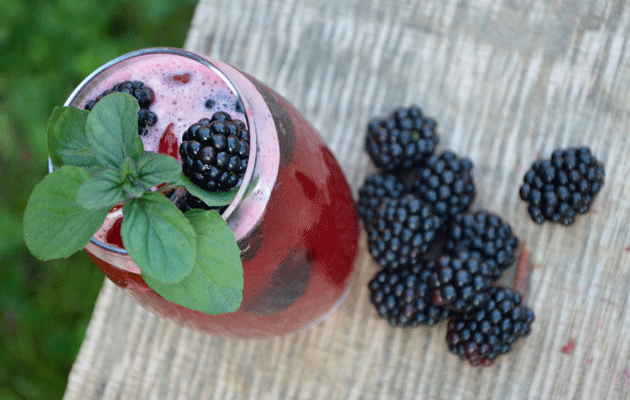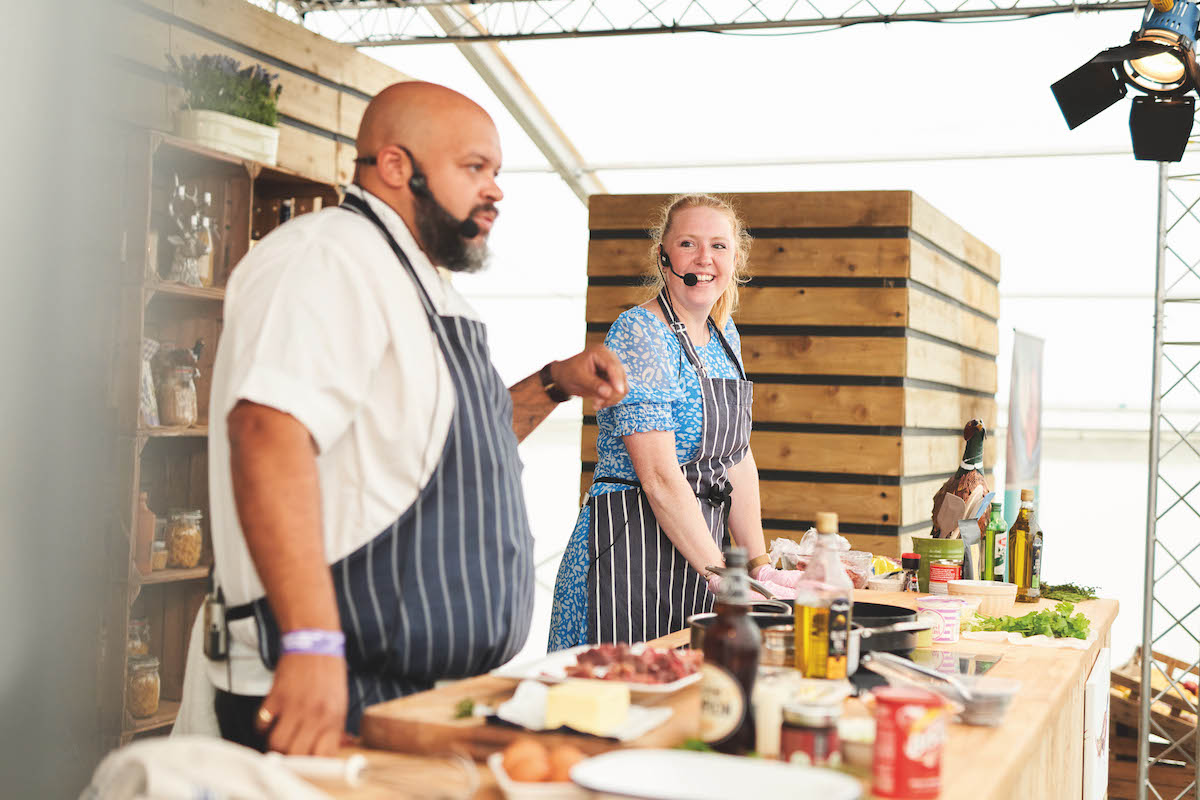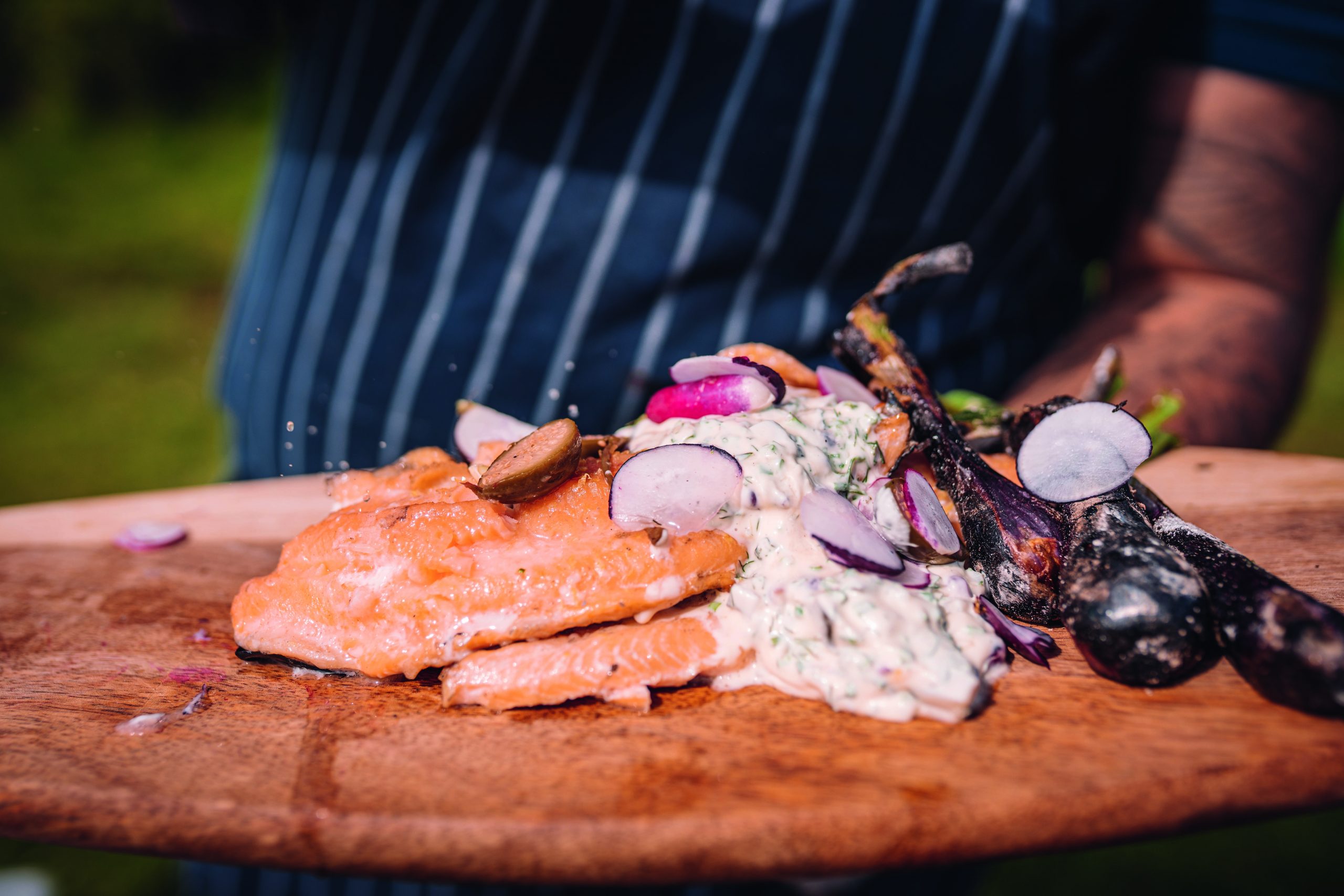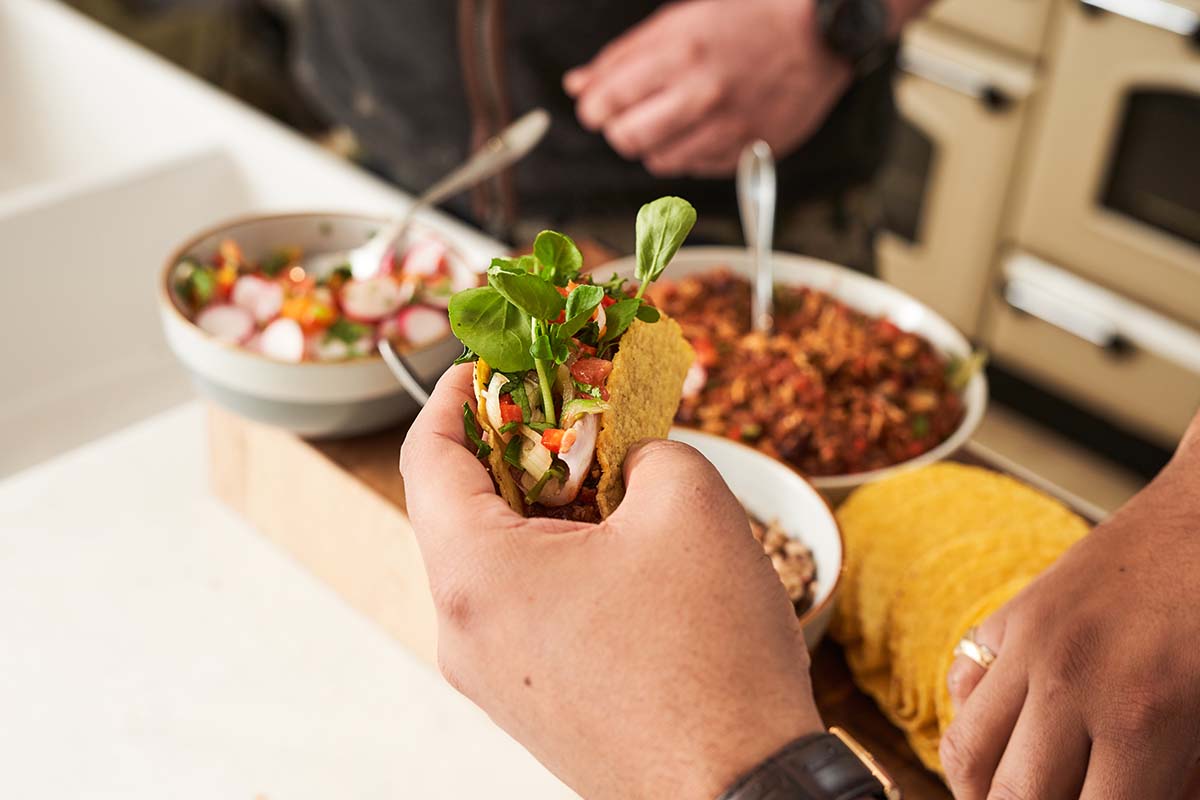How to make infused spirits and fruit liquers
It's easy to make infused spirits or fruit liquers using wild plants and berries fresh from the field if you follow Nick Weston's recipes and advice

I could never understand why my father insisted on picking sloes. Every autumn our whole family would head for our hedgerows to fi ll our buckets with the small blueberry-esque tart fruit. My seven-year-old self couldn’t grasp the value of such an astringent berry tucked away among vicious thorns, but, of course, I was a good few years away from my first sip of sloe gin, and now I know differently.
Things have come a long way since then, both in terms of ingredients and methods. The hedgerows have so much more to offer the booze cabinet than sloes, damsons and elderberries; there are flowers, wild greens and aromatics — even wood has a role to play. At Hunter Gather Cook, we always finish up our seasonal day courses by mixing up some wild cocktails on the top deck of our tree house headquarters. The key requirements are that you get creative, have fun and, of course, do plenty of tasting!
Skip to the recipes:
Blackberry and apply hot toddy
Blackberry whiskey
The wild Bloody Mary
Ground ivy and wild horseradish vodka
Meadowsweet Martini
That’s the spirit
There is a big difference between an infused spirit and a liqueur. In simple terms, any kind of infusion or maceration involving sugar in the process is a liqueur— sloe gin, for example, is a liqueur. An infused spirit involves the addition of fruit, fl owers or aromatics to a spirit to infuse it — no sugar or sweetening ingredients are used. Which is best? It largely depends on what you want to do with the finished product. If you want to make cocktails, it’s best to leave sugar out as you can add this later, through a cordial or simple sugar syrup.
Cheap is not always cheerful
There are many hedgerow booze recipes that state you should use the cheapest supermarket own-brand vodka, gin or whisky. To some degree that is true; if you’re making a liqueur, the added sugar will help to mask the poor quality of the base product. If you’re making a simple infusion, go for something a little more upmarket— always bear in mind that your final product is only going to be as good as the quality of the ingredients.
Vodka is the best for most infusions or liqueurs. That’s because it’s a completely neutral spirit; it’s able to take on both light floral or heavy aromatic flavours with ease. For any liqueurs you can go as cheap as you like, but for pure infusions, a goodquality grain vodka, such as Absolut or Ketel One, gives excellent end results. It is possible to use vodka as a base spirit to make your own gin, which is essentially a neutral spirit flavoured with a variety of different botanicals — the principal ingredient being juniper. Other botanicals can include orange or lemon peel, caraway seed, cardamom, coriander seed, star anise, lemongrass, rosemary, bay and so on.
Because it’s already been flavoured with various botanicals, gin is best used for fruits rather than the more delicate floral infusions.
Cheap can be cheerful: it’s worth noting that Aldi’s own-brand gin (which costs less than £10) won a gold medal at the 2014 International Spirits Challenge, beating both Bombay Sapphire and Hendrick’s. However, you can’t go wrong with Gordon’s or Beefeater.
Whisky is also best used for fruit, such as blackberries, and wood. It sounds weird, but both whisky and bourbon can be infused with fruity woods such as apple, cherry or plum. If you whittle down a couple of branches (remove the bark first), take the shavings and blowtorch them prior to infusing, the results are a delightfully smoky finish. The shavings, once removed from the infusion and dried out, can then be used in the smoker for a whisky finish (extra thrifty). Again, don’t pull out the Oban or Laphroaig for this; Famous Grouse is a solid choice.
How to Infuse alcohol
There are three different methods of infusion. While traditional maceration will always be a mainstay, you can speed up the process with the other two methods using either heat or pressure.
1. Traditional maceration
This is a solid method that you may be familiar with. Simply take a kilner jar, half fill it with your ingredients and then top up with your chosen spirit. Seal and leave it in a dark place for anything from two weeks to two years.
2. Sous vide
This method uses heat to speed up the extraction process and takes 90minutes to two hours. You don’t need an expensive sous vide machine and water bath; a deep fat fryer filled with water and a thermometer will suffice; you could even use a pan on the hob. You will need some zip-lock bags to put all the ingredients in for infusing. Essentially sous vide speeds up the process (allowing for plenty of room for experimentation) and simplifies it while ensuring you do not lose any delicate fl avours to the atmosphere. Basically, you pour your spirit into a zip-lock bag, add your infusion ingredients, suck the air out of the bag, seal it and stick it in a 40°C water bath for an hour or two. This is a great method for berries and botanicals.
3. Cream whippers and nitrous oxide
This method uses pressure to aid extraction and dramatically reduces the length of time to two minutes. Basically, it’s a flash infusion: the nitrous oxide forces all the air out of the ingredients you’re infusing and the spirit rushes into all the air pockets, which then drags all the flavouring with it once the cream whipper is discharged. This method works best with delicate floral infusions such as elderflower or meadowsweet. Simply half-fill the cream whipper with your ingredients, add enough spirit to cover and screw on the lid. Charge the cream whipper once with a N²O cartridge and leave it to stand for one minute. Remove the spent cartridge and reload; repeat the process, only this time, shake it for one minute. Finally, discharge the cream whipper completely, unscrew the top and then pour out the infusion into a receptacle through a sieve that you have lined with muslin.
Homebrew recipes
Blackberry and apple hot toddy
Ingredients:
- Juice of two lemons
- 100ml of blackberry whisky
- 200ml of warmed, cloudy apple juice
- Honey if needed (depends how sweet you like it)
Mix together, pour and enjoy. This is a great winter warmer using your own home-made blackberry whisky.
Blackberry Whisky
Ingredients:
- 1.4kg of blackberries
- 200g of white granulated sugar
- One bottle of whisky
Simply place all ingredients in a large kilner jar and give a vigorous shake; repeat every couple of days for two weeks. Then leave in a dark place for three months before straining and bottling. Improves with age if you can resist!
The wild Bloody Mary Recipe
Ingredients:
- A shaker of ice
- 100ml of infused vodka
- Juice of 1 lemon
- 12 dashes of Worcester sauce
- Six dashes of Tabasco
- Salt and pepper to taste
- Eight fresh tomatoes
Fill a cocktail shaker with ice and add the infused vodka, lemon juice, Worcester sauce and Tabasco, along with a healthy dose of salt and pepper. Place the fresh tomatoes in a bowl, add a pinch of flaked sea salt and using a muddler (a rollig pin will suffice) pummel the hell out of the tomatoes for a good couple of minutes until pulverised. Strain the fresh tomato juice into the cocktail shaker and stir well. Pour into two glasses and garnish with a horseradish leaf.
Ground ivy and wild horseradish vodka
Ingredients:
- Two handfuls of washed ground ivy leaves
- One large chunk of wild horseradish root chopped into slices about the size of a £1 coin
- One bottle of vodka
Ground ivy is a common wild green. It has a pungent herbaceous aroma with notes of sage, mint, thyme, and rosemary. It was originally used to flavour beer before hops. Wild horseradish is a fiery root containing the volatile oil sinigrin, which is capable of making a grown man weep. Both ground ivy and wild horseradish marry extermely well when infused to vodka, but this really is only for us in a Bloody Mary
Meadowsweet Martini Recipe
Ingredients:
- Four Meadowsweet flower heads
- 250ml Gin or Vodka
- 75ml Dry Vermouth
Meadowsweet flowers have a wonderful sweet smell to them with notes of vanilla and almond. These contains high levels of salicyclic acid, which was originally isolated in the plant to produce apirin, so this might give you a headache if you overindulge!
Take flour flower heads of meadowseet and pick off just the flowers, discarding any stalks. Place them in the cream whipper. Add 250ml of gin or vodka, depending on your preference, and infuse.
Strain the infusion into a cocktail shaker with plenty of ice, add 75ml of dry vermouth and stir. Pour into a chilled martini glass and garnish with a meadowseet flower. Everyone has a preference as to the amount of vermouth to use; this is based in three parts vodka to one part vermouth.
It is best served sitting on the riverbank where you picked the meadowsweet. Enjoy while dusk descends.








